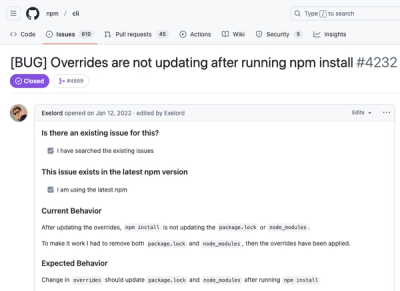fireupdown
Apply sequences of up and down routines one after another as they finish.
Ideal for initializing and tearing down asynchronous systems.
import { up, down } from 'fireupdown'
const systems = [
{
rc: 0,
up: (config) => startRouter(config).then(router => ({ router })),
down: ({ router }) => stopRouter(router)
},
{
rc: 1,
up: (config, { router }) => (
mountUI(router).then(component => ({ component }))
),
down: ({ component }) => (
unmountUI(component)
)
}
]
Then you can bring all the systems up where "routing system" (rc = 0) will have to finish before invoking the "UI" system:
up(systems)({ startingURL: '/' }).then(appState => {
appState.hasOwnProperty('router')
appState.hasOwnProperty('component')
}, startFailure => {
})
Later you can bring all the systems down using the down routine:
down(systems)(appState).then(() => {
}, stopFailure => {
})
Installation
Get it via NPM:
npm install --save fireupdown
The source is written to work in Node6+, but you may need to transpile it for
older Browsers. It does not use ES6 modules, but requires Promise to be
available.
API
The package exports three symbols: up, down, and ref.
.up
Bring all systems up starting from the lowest defined RC level. The
signature is as follows:
function up(
systems: Array.<System>
): function(...Any): Promise.<Object?>
Where System is defined as:
{
?rc: Number,
?up: function(...Any): ?Promise.<Object>,
?down: function(...Any): ?Promise.<Object>
}
To pass arguments to the system hooks you simply pass them to the function
returned by up. They will be passed in the order you specify.
const systems = [
{
up: (a, b) => {
}
}
]
up(systems)(dep1, dep2)
The hooks will also receive a "state" object as the last parameter which is
what is yielded to you when the promise resolves. You can use that object to
maintain references to the system output either for use in the down routines
to bring them down or if you need them for your application.
const systems = [
{
up: (a, state) => {
return { foo: '1' }
}
}
]
up(systems)(dep1).then(state => {
state.foo
})
The state object is aggregated from all the return values of the hooks you're
running. If the return value is not an object, the behavior is undefined.
const systems = [
{
up: () => ({ foo: 1 })
},
{
up: () => ({ bar: 1 })
},
{
rc: 1,
up: state => ({ bar: state.bar + 1 })
}
]
up(systems)().then(state => {
state.foo
state.bar
})
.down
Bring all systems down starting from the highest defined RC level.
This is the inverse operation of .up. The signature, parameters and
return values are identical.
.ref
A convenience shortcut for associating the return value of a hook with a
property on the state object.
What it really does is just this:
const ref = name => value => ({ [name]: value })
The following two hooks are exactly equivalent:
const up1 = () => produceSomething().then(x => ({ something: x }))
const up2 = () => produceSomething().then(ref('something'))
License
MIT



